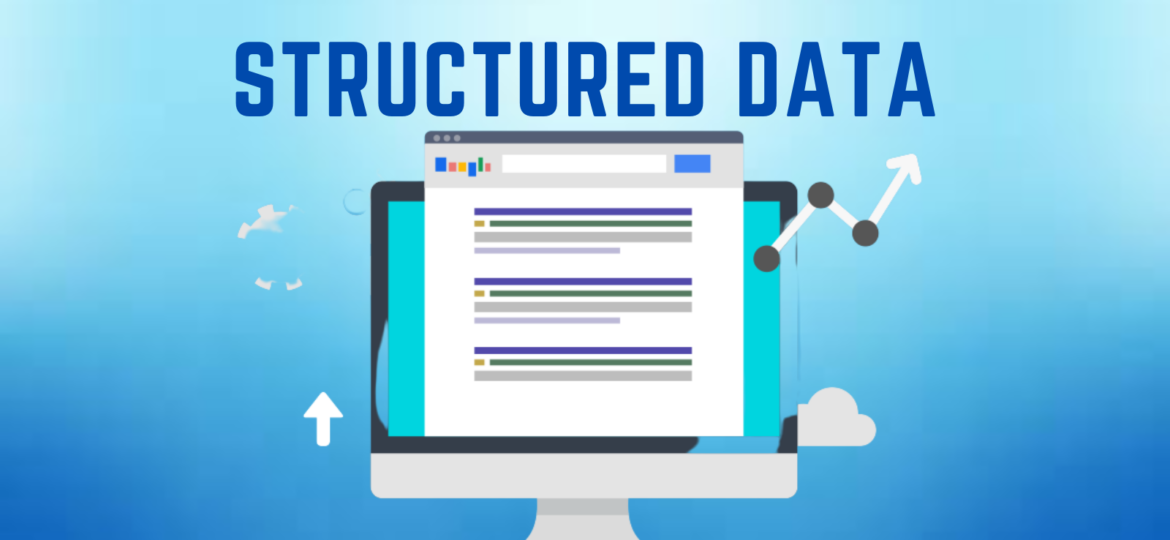
Do you ever wonder why your website isn’t ranking as highly on search engine results pages (SERPs)? If so, you’re not alone. Many business owners struggle to figure out how to get their content to appear in the top spots of the SERP. A big part of that puzzle lies in structured data – a powerful and sometimes overlooked tool for improving SEO. Structured data is code which helps tell search engines what information appears on your site, Therefore, allowing them to better categorize it and direct users directly to your content when they’re searching for something relevant. In this blog post, we’ll discuss why structuring data matters for SEO. In addition, how implementing it can help make sure you secure those higher ranks.
What is Structured Data?
Structured data is information that has been formatted into a structured and organized format. Therefore, allowing computers to easily read and interpret the information. Structured data can include things such as databases, spreadsheets, and other organized body of information. By utilizing formats like XML and JSON, developers can sort out the different pieces of structured data easier. In addition, Structured data usually follows some kind of predetermined format. For example, it might be organized into tables or rows, with headings assigned to each column. Therefore, allowing the computer to know what type of data should be inputted in each one.
This organization makes structured data easy for machines to understand and process. As a result, humans are free to focus their energy on more complex tasks (like finding patterns and making predictions). Also, the data has many uses. For instance, it can be used for SEO, digital marketing automation and customer segmentation strategies. In addition, fraud detection systems, and other business operations. It is vital to use this on a company website. However, over 50% of Fortune 500 companies do not yet use it.
How Does It Work?
Structured data is typically stored in databases or spreadsheets that are formatted in specific ways. In its most simple form, structured data involves storing identifiers. This may include numbers, text, or images. In addition, their associated attributes or values. For example, structured data could involve entering customer information such as name and address into an organized chart. This type of data allows businesses to search through a large set of records quickly to find information. Additionally, it can be used by machines to extract certain pieces of information which can then be used for statistical analysis. As a result, organizations are able to use the collected information to enhance performance and promote growth.
Why structured data is important for SEO
Structured data is incredibly important when it comes to search engine optimization (SEO). When structured data markup is present, search engines can better understand and rank web content. Therefore, bringing in higher rankings and more visible results. It helps search engines like Google to recognize a business entity’s information and reviews on other platforms. As a result, more people will be able to find them online, which boosts traffic and customer engagement in the process.
For small businesses, the data allows for improved keyword optimization by providing the necessary context for what the page is all about. And, it allows search engine crawlers to process information with greater accuracy. Another example of how this works is it can tell search engines what similar topics appear on other websites. Or, how frequently updated the content on the page is. This structured data helps Google know what to expect from each piece of content. Therefore, allowing them to place it in their rankings. Consequently, the data improves overall website performance and promotes a satisfying user experience.
10 Different types of structured data to Optimize SEO
1. Breadcrumb
Breadcrumb structured data is an essential part of SEO optimization. It brings further clarification by providing the path you used to get there. For example, breadcrumb structured data could be “Home > Shop > Computers”. This structured data gives search engines contextual information about your content such as hierarchy, structure, and relationships. When this is added to a web page it can improve click-through rates. In addition, give your pages a higher ranking in keyword searches.
2. Corporate Contact
Corporate contact structured data provides an organized way of adding relevant contact information for a business to their website or digital presence. This helps search engines like Google to obtain your business’s contact information effectively. As a result, showing it in their results when people are searching for that information. For example, if someone is looking for the phone number for an HVAC company, Google might display data from the company website providing customers with easy access to that information.
3. FAQ structured data
A business’ FAQ section can appear as an enriching snippet on SERPs with answers to specific search queries. For example, if someone searches “what time does x store close,” the structured data could include opening and closing hours. This may be information which the user wouldn’t find without looking directly at the website. Therefore, making it easier for customers to find answers.
4. Job Postings
By formatting structured data onto job postings, businesses help potential applicants discover them in a more efficient manner. This allows search engines to quickly understand what each job allows and organizes the data into their own categories and labels. For instance, the data can be used to include details like title, salary range, qualifications needed, and location in your job posting.
5. Local Business structured data
This data has a way of adding structured markup to local business websites. It helps local businesses get more visibility in localized searches (local SEO). Therefore, putting their products in front of local consumers. For example, the data can inform the search engine algorithm when someone searches for “closest restaurant”. The SERP may display restaurants within the radius specified in the query. By leveraging this, local businesses can improve their organic results and drive more customers.
6. Logo structured data
This type of data helps SERP’s to associate the logo with your business when it appears in organic search results. For example, if you have data installed in your website’s source code, your logo will appear beside any mentions of your business name on Google or other search engine results pages.
7. Product
Product structured data can help make your product more visible on search engines. It can give your product additional details like its type, brand, condition, price, availability and more. These are all key pieces of information that potential buyers need when evaluating a purchase. For example, if a customer was looking for a new TV matching certain criteria (brand, size etc.), the data could allow search engines to pull information from your site. Therefore, it could show up along with all other relevant results.
8. Ratings/Reviews
This type of data helps businesses to highlight customer reviews and ratings on their websites. For instance, a business may use this to display an aggregate star rating derived from customer feedback alongside their products on SERPs. Another example, if someone searches for “best shoe store”, the data could pull reviews from Yelp or other review sites directly into the SERP next to listings. This provides valuable information, is visually appealing, and shows prospective customers that they can trust the establishment. As a result, leading them to make informed decisions as they consider different purchase options. All while providing SEO benefits for the business itself.
9. Social Profile
This type of data is a structured way of presenting information about individuals, organizations, or other entity available on their Redes Sociales profiles. For example, including data from your LinkedIn profile along with your website page can help increase the visibility of your site in the SERPs when someone searches for your name or profession.
10. Video structured data
Video structured data comes in the form of adding tags to videos which help them be crawled by search engines. In turn, it helps maximize visibility, discoverability, and engagement with users across platforms like YouTube, Vimeo and Google Search. An example of this includes adding titles and descriptions to specific sections or points of time. As a result, making it easier for users to jump directly to certain parts of the video.
By leveraging these structured data formats, businesses can better shape their SEO performance by improving rankings in the SERPs.
Best Practices
The best practice for implementing structured data correctly involves three steps:
1. Input
The data needs to be input into a structured database system where unique tags are created for each item as part of a tagging process to make it easier for machines to interpret.
2. Tag
Structured tags will need to be created that identify attributes about items. For example, a product page may have different categories such as product name, manufacturer details, availability, color and size options. These items will all need their own tags.
3. Organize
The data should be organized into hierarchical structures that support machine learning indexing capabilities. Therefore, providing targeted search results when visitors search the site or app.
What is Schema?
Schema works by giving each piece of content an additional layer of contextual meaning. Therefore, allowing search engines to understand the purpose of the contents. For example, instead of simply crawling text like “this article was written in 2020”, the structured data provided through schema will allow search engines to recognize the year 2020 as when the article was published. Thus, it helps search engines sort and prioritize content more accurately than regular HTML tags could achieve. By adding structured data via schema, web developers can provide context for what their websites contain not just to readers but also to search engine crawlers. Thereby, increasing their visibility as well as Search Engine Optimization (SEO) rankings.

